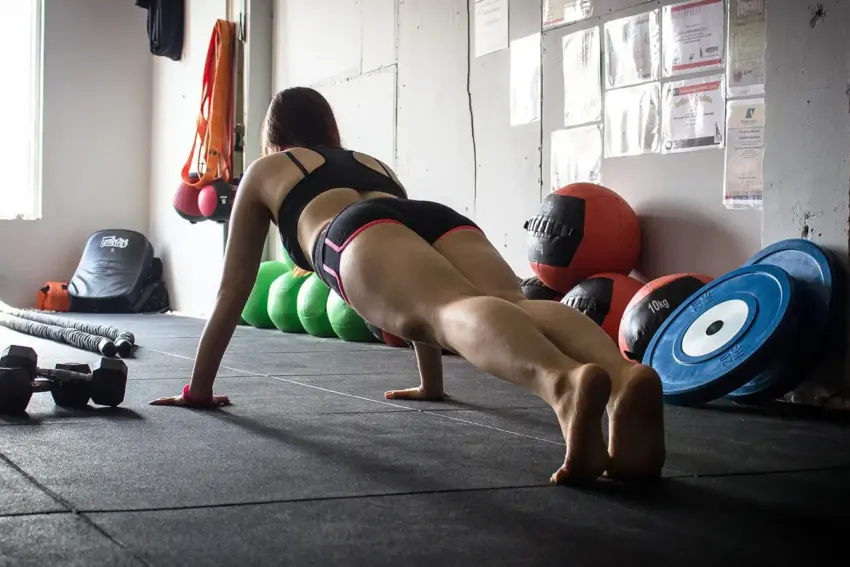- Understanding the Benefits of Planking Daily
- Understanding the Core Benefits of Planking Daily
- How to Perfect Your Plank: Techniques for Maximum Effect
- From Core to More: Additional Health Perks of Daily Planks
- Real People, Real Results: Testimonials on the Benefits of Planking Daily
- Incorporating Planking into Your Everyday Fitness Regimen
- Overcoming Common Challenges with Daily Planking
- Measuring Your Progress: The Impact of Daily Planking Over Time
Understanding the Benefits of Planking Daily
Planking, often seen as a simple exercise, is one of the most effective ways to build core strength and improve overall fitness. This exercise, which involves maintaining a position similar to a push-up for as long as possible, engages multiple muscle groups simultaneously. Here’s why understanding the benefits of planking daily and incorporating this exercise into your routine can be transformative:
Comprehensive Core Conditioning
Planking primarily targets the core muscles, which include the abdominals, back, and pelvis. A strong core is essential for physical health and daily activities. Whether lifting groceries, playing sports, or doing housework, a robust core makes everything easier and less injury-prone.
Enhances Postural Support
Regular planking enhances posture by strengthening the muscles necessary to maintain an upright position. Improved posture reduces the strain on your spine and can alleviate back pain, often exacerbated by poor posture and a weak core.
Boosts Metabolic Rate
Planking is a compound exercise that works for multiple muscle groups simultaneously. By engaging various muscles simultaneously, your body burns more calories during and after exercise than isolated exercises like bicep curls. This metabolic boost is crucial for overall fitness and weight management.
Improves Balance and Flexibility
As you plank regularly, you’ll notice an improvement in your balance and flexibility. This stems from the enhanced strength of your core and stabilizer muscles. Better balance is essential as it decreases the likelihood of falls and injuries, which can be life-altering, especially as we age.
Mental Benefits
Beyond the physical benefits, planking has a mental aspect. Holding a plank requires concentration and mental endurance, training you to focus and improve your pain tolerance. This mental resilience can translate into other areas of life, helping you tackle challenges with a stronger mindset.
Incorporating planking into your daily routine doesn’t require much time but offers significant benefits that affect physical and mental health. Even a few minutes a day can lead to noticeable improvements in your fitness levels and general well-being. So why not make planking a regular part of your fitness regime and start reaping these benefits today?
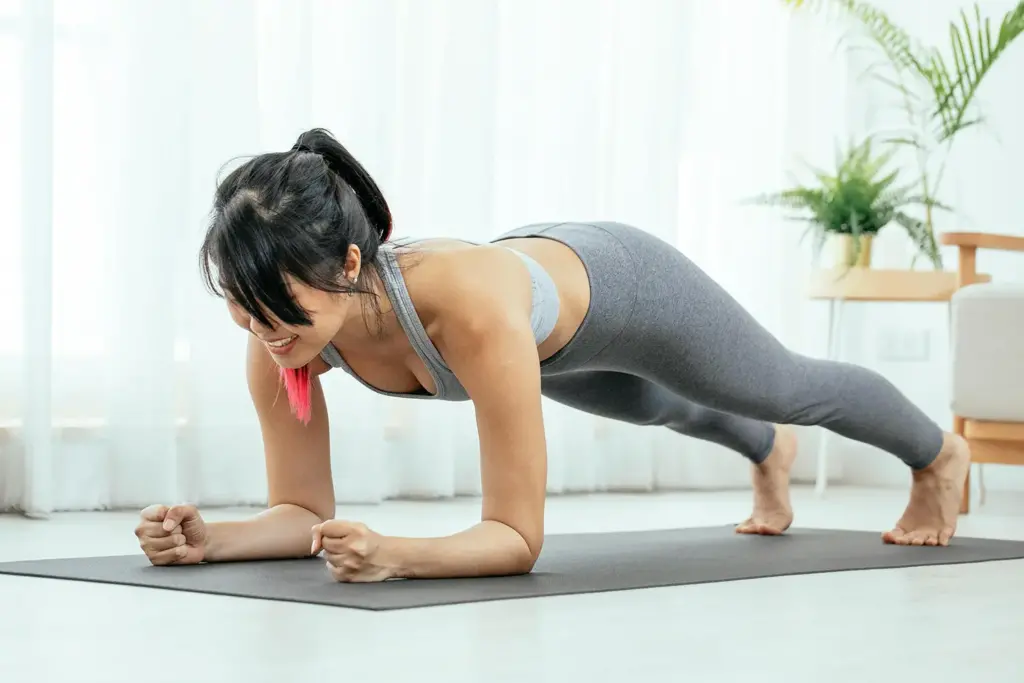
Understanding the Core Benefits of Planking Daily
Understanding the benefits of planking daily reveals a range of advantages that extend well beyond just core strength. This simple exercise impacts various aspects of your health, making it an invaluable part of any fitness regimen. Here are the key benefits that you can gain from incorporating daily planks into your routine:
Strengthens Core Muscles
- Rectus Abdominis: Known as the “six-pack” muscles, these are significantly engaged during planking.
- Obliques: These muscles on your side help in rotation and lateral movement.
- Transverse Abdominis is the deepest muscle set stabilizing your core and lower back.
Enhances Muscle Definition
Regular planking helps to tone and define the muscles, not just in the core but throughout the body. The tension created during a plank engages the shoulders, chest, arms, legs, and glutes, contributing to muscle definition and strength.
Reduces Back Pain
Planking helps build muscle while ensuring you do not put too much pressure on your spine or hips. Strengthening your core can alleviate and prevent lower back pain, a common issue for many people.
Increases Flexibility and Posture
- Flexibility: Planking regularly stretches and expands your posterior muscle groups, including the shoulders, shoulder blades, and collarbone. It also stretches your hamstrings, feet’ arches, and toes.
- Posture: Regular planking strengthens the core, allowing for a straighter, more stable posture. This helps reduce slouch and promotes better standing and sitting posture.
Enhances Overall Body Function and Fitness
- Coordination: By engaging multiple muscle groups, planning helps improve your coordination during physical activities.
- Metabolic Boost: Planks are an excellent way to boost your overall metabolism, helping you burn more calories throughout the day, even at rest.
Understanding these benefits can help motivate you to include planking in your daily routine. The advantages are clear: daily planking can significantly boost your health and fitness, from enhancing physical appearance to improving functional movements.
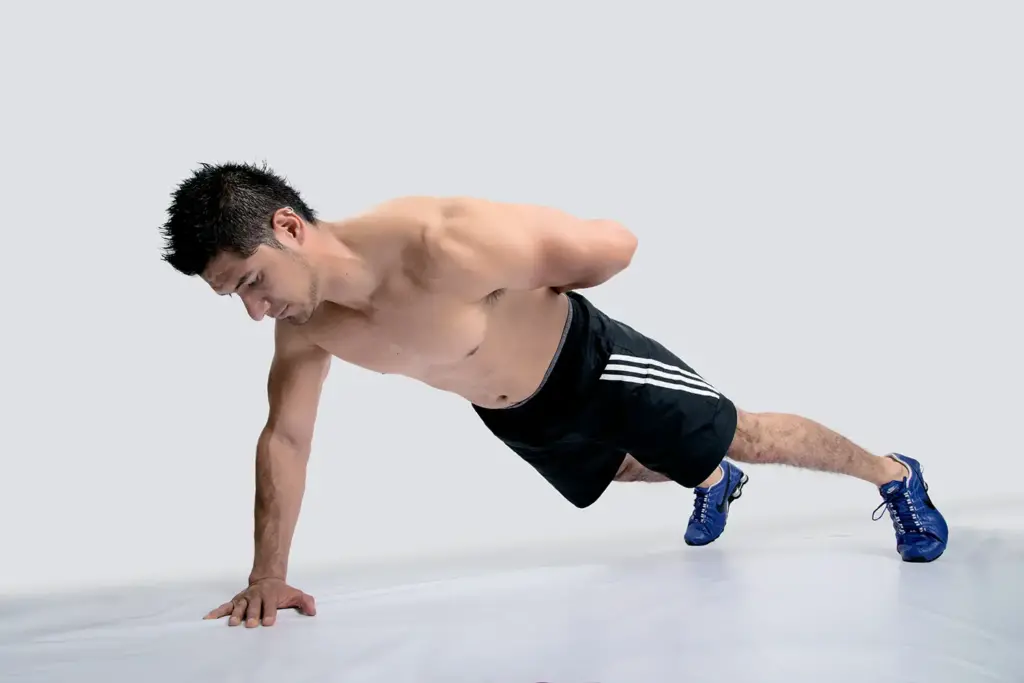
How to Perfect Your Plank: Techniques for Maximum Effect
Mastering the plank involves more than just holding your body off the ground. Proper form and technique ensure you gain the maximum benefits from this exercise without risking injury. Here are some tips to perfect your plank and maximize the benefits of planking daily:
Start with the Basic Forearm Plank
- Position Your Arms Correctly: Place your forearms on the ground with your elbows aligned directly under your shoulders. Your arms should form a 90-degree angle.
- Align Your Body: Keep your body straight from the top of your head to your heels. Your hips should neither sag nor stick up.
- Engage Your Core: Actively contract your abdominal muscles to stabilize and straighten your torso. Imagine pulling your belly button up towards your spine.
Focus on Breathing
- Maintain Even Breathing: Avoid holding your breath while planking. Instead, breathe slowly and deeply to maintain core engagement and stabilization throughout the exercise.
Gradually Increase Duration
- Start Small: Begin with short intervals, such as 20-30 seconds. As your strength improves, gradually increase the duration.
- Set Incremental Goals: As your endurance builds, work towards holding the plank for more extended periods, like aiming for one minute, then two.
Experiment with Variations
Once you’re comfortable with the basic plank, try introducing variations to challenge different muscle groups and keep your routine interesting:
- Side Plank: Shift to a side plank to engage your obliques and side muscles.
- Plank with Leg Lift: Lift one leg at a time while planking to add intensity and engage your glutes and lower back.
- Reverse Plank: Sit on the floor with your legs extended, place your hands behind your hips, then lift your body to form a straight line from head to heels.
Monitor Your Form with Mirrors or Video
- Use Visual Feedback: Check your form in a mirror or record a video to ensure your hips, back, and shoulders are properly aligned.
- Make Adjustments: If you notice any sagging or piking, adjust your position to maintain the straight line.
By focusing on correct form and gradually increasing the challenge, you’ll maximize the effectiveness of your planks and see significant improvements in strength and stability. This approach ensures that you safely progress in your fitness journey while gaining the full benefits of planking daily.

From Core to More: Additional Health Perks of Daily Planks
While planking primarily focuses on strengthening the core, the benefits of planking daily extend to numerous additional health advantages. Planking can profoundly impact other aspects of your health beyond muscle toning and core strength.
Improved Respiratory Function
- Lung Expansion: Maintaining the plank position encourages deeper breathing and increases lung capacity. This enhanced breathing can help improve oxygen intake and overall respiratory health.
Better Mental Health
- Stress Reduction: Planking is known to help reduce stress by increasing endorphin production, chemicals in the brain that act as natural painkillers and mood elevators.
- Increased Focus: Regular engagement in exercises like planking can also help improve your focus and concentration.
Enhanced Bone and Joint Health
- Joint Support: Planking strengthens the muscles around critical joints, such as the shoulders, elbows, and knees, to protect them from overuse and injury.
- Bone Strength: Regular weight-bearing exercises like planking can help maintain bone health and prevent osteoporosis.
Cardiovascular Improvement
- Heart Health: Although planking is primarily a strength-building exercise, maintaining the position for extended periods can have cardiovascular benefits by increasing heart rate, especially in more dynamic variations.
Increased Metabolic Rate
- Calorie Burning: Planks are an efficient way to burn calories. Although they are a static exercise, planks can help increase your metabolic rate, contributing to weight loss and metabolic health when combined with a balanced diet and regular exercise.
Incorporating daily planks into your routine develops physical strength and contributes to various other health benefits, making it a comprehensive exercise choice. Whether you’re looking to boost your mental well-being, improve cardiovascular health, or enhance joint stability, the additional perks of daily planking provide compelling reasons to include this powerful exercise in your daily regimen.

Real People, Real Results: Testimonials on the Benefits of Planking Daily
Hearing from individuals who have incorporated daily planking into their routines can be incredibly motivating. These testimonials underscore the diverse and significant benefits of planking daily on various aspects of health and well-being.
Sarah’s Journey to Stronger Core and Reduced Back Pain
- Before Planking: Sarah struggled with chronic lower back pain, which made daily activities difficult.
- After Planking: After six months of daily planking, her core strength increased, significantly reducing her back pain. She reports a noticeable improvement in her ability to perform everyday tasks without discomfort.
Mark’s Improved Athletic Performance
- Before Planking: As an amateur cyclist, Mark’s lower body strength overshadowed his core, affecting his overall endurance and stability.
- After Planking: Incorporating planks has balanced his muscle development and improved his cycling posture, leading to better performance and less fatigue during long rides.
Jenna’s Mental Health Boost
- Before Planking: Jenna experienced high levels of stress and anxiety, which affected her overall health.
- After Planking: She started planking to break away from stress. The focus required for maintaining the plank position helped her manage anxiety better and provided a mental reset during her day.
Alex’s Full Body Transformation
- Before Planking: Alex wanted to tone his body but needed more time and resources.
- After Planking: Planking daily for a year not only strengthened his core but also toned his arms, legs, and back, leading to a full-body transformation with minimal investment in equipment and time.
Lisa’s Increased Energy and Metabolism
- Before Planking: Lisa felt sluggish and had a slow metabolic rate, which made losing weight difficult.
- After Planking: Regular planking helped increase her metabolic rate, contributing to more consistent energy levels throughout the day and aiding in her weight loss journey.
These stories from real people demonstrate that planking daily’s benefits extend far beyond physical improvements. They touch on enhanced mental health, better pain management, improved athletic performance, and overall lifestyle enhancements. Planking offers a simple yet powerful solution, whether seeking physical transformation or mental resilience.
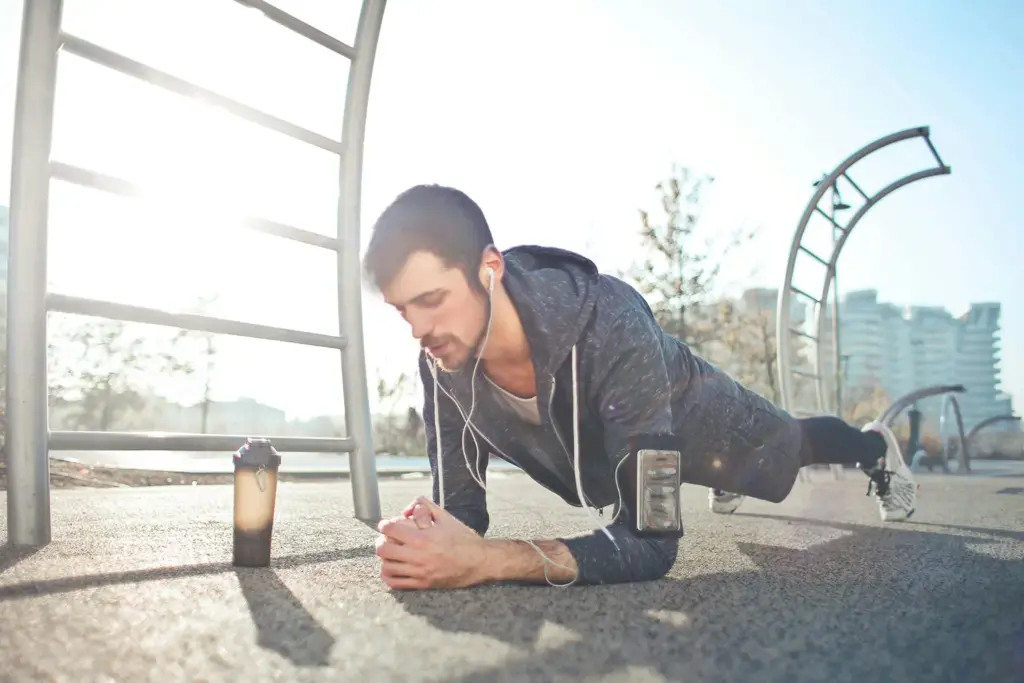
Incorporating Planking into Your Everyday Fitness Regimen
Adding planking to your daily fitness routine can be one of the most effective ways to tap into the benefits of planking daily, enhancing physical strength and overall health. Here’s how you can seamlessly integrate this powerful exercise into your everyday activities:
Start with a Simple Schedule
- Morning Routine: Incorporate a one-minute plank into your morning routine to kickstart your metabolism and energize your day.
- Break Times: Take short breaks during work or study to do a quick plank, which can help you refocus your mind.
Combine with Other Exercises
- Cardio Sessions: Follow up your jogging or cycling session with a few minutes of planking to ensure a balanced workout with strength training.
- Yoga and Stretching: Add planks to your yoga routine to improve balance and core strength, complementing flexibility with muscle toning.
Use Planking Challenges to Stay Motivated
- 30-Day Plank Challenge: Start with a manageable time, like 20 seconds, and gradually increase the duration over 30 days to build endurance and strength.
- Variety Challenge: Try a different plank variation daily to keep the exercise interesting and challenging.
Track Your Progress
- Journaling: Keep a fitness journal to note your planking times and feelings post-exercise. This can be motivating and provide tangible proof of your improvements.
- Fitness Apps: Use apps to set reminders, track your planking time, and monitor progress through graphical displays.
Make It Social
- Exercise Groups: Join or form a group focused on daily challenges like planking. This can provide social support and accountability.
- Online Community: Share your progress in online fitness forums or social media to connect with others who can offer encouragement and tips.
Incorporating planking into your daily fitness regime boosts your physical health and establishes a routine that fosters discipline and determination. Integrating these steps into your lifestyle will enhance physical fitness and promote mental and emotional well-being.
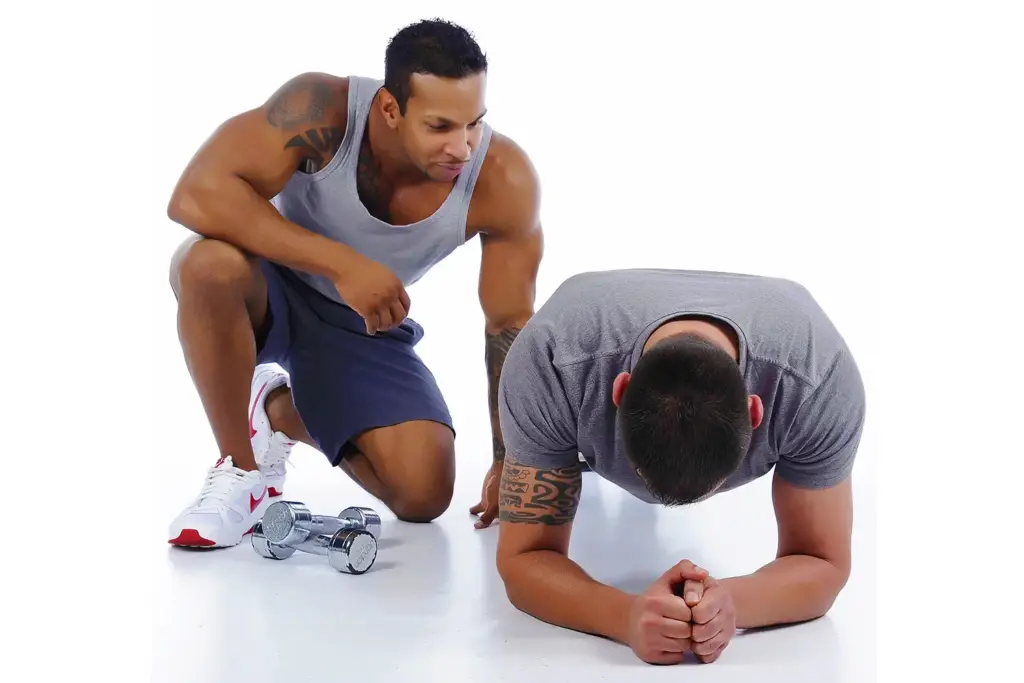
Overcoming Common Challenges with Daily Planking
Though highly beneficial, daily planking can come with challenges, especially for beginners or those looking to advance their routine. Here are strategies to overcome common hurdles and ensure continuous progress and engagement in your planking exercises.
Dealing with Boredom
- Mix It Up: Introduce variations such as side planks, reverse planks, or planks with leg lifts to keep the routine engaging and challenging.
- Set Goals: To maintain motivation, create small, achievable goals, like adding a few seconds to your weekly plank time.
Avoiding Plateaus
- Increase Intensity: As your strength builds, increase the difficulty of your planks by adding movement like plank jacks or using stability balls.
- Challenge Yourself: Regularly set new challenges, such as longer plank times or incorporating planks into a circuit training routine.
Managing Discomfort
- Correct Form: Ensure your form is accurate to avoid unnecessary strain on your back or shoulders. Consider consulting a fitness professional to review your technique.
- Build Gradually: Increase your planking time slowly to build endurance without causing injury or excessive fatigue.
Scheduling Issues
- Plank on the Go: Plank during downtime, like while watching TV, during a lunch break, or even in the morning as you get ready for the day.
- Reminder Systems: Use reminders on your phone or sticky notes in visible areas to prompt you to plank each day.
Coping with Initial Weakness
- Start Small: Begin with shorter intervals, such as 10-15 seconds, and gradually increase as you build strength.
- Regular Practice: Consistency is critical. Regular planking, even for short durations, can significantly improve your strength.
By addressing these challenges head-on with practical solutions, you can make leveraging the benefits of planking daily a sustainable and rewarding part of your fitness regimen. Whether you want to enhance physical strength, improve posture, or boost mental endurance, overcoming these obstacles can pave the way for a successful and beneficial planking habit.
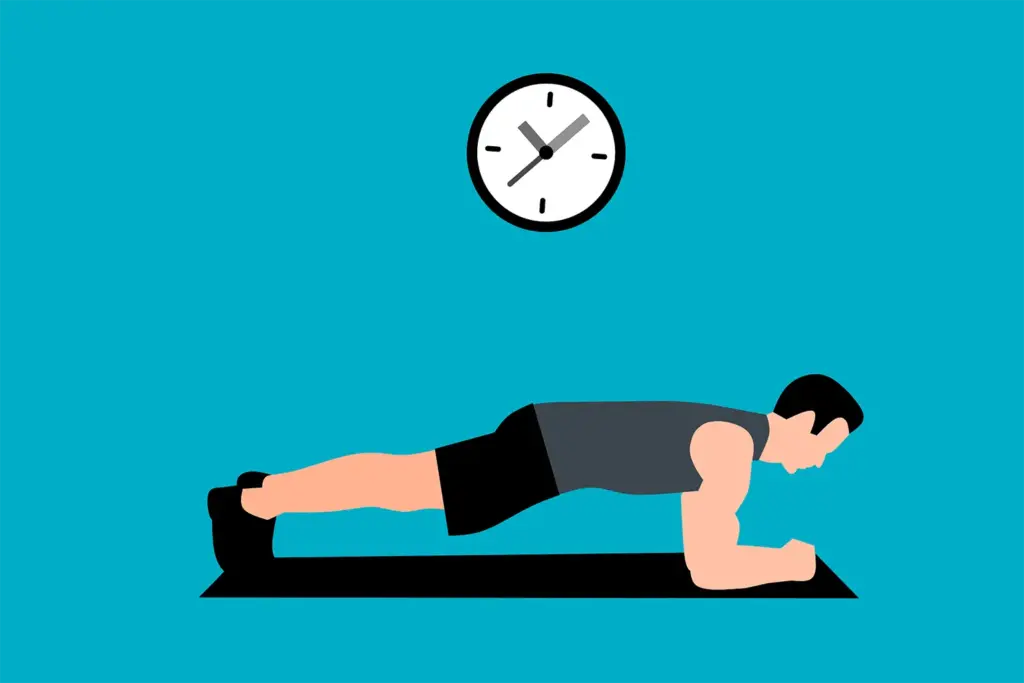
Measuring Your Progress: The Impact of Daily Planking Over Time
Tracking the impact of daily planking on fitness and health is essential for motivation and gauging the effectiveness of your efforts. Here’s how you can measure your progress and see the tangible benefits of this simple exercise over time.
Establish Baseline Measurements
- Initial Assessment: Before starting your daily planking routine, measure your core strength, endurance, and body composition.
- Physical Indicators: Note how long you can comfortably hold a plank and any struggles with form or discomfort.
Use a Progress Journal
- Daily Entries: Record the duration of your plank each day and any additional variations you incorporate.
- Reflect on Feelings: Note any changes in how you feel during and after planking, including increases in strength or decreases in fatigue.
Visual Progress Indicators
- Photographic Evidence: Take monthly photos in a consistent pose to visually document muscle tone and body composition changes.
- Video Comparisons: Record videos at the beginning of your journey and regular intervals to compare form improvements and endurance.
Set Performance Goals
- Incremental Targets: Set specific, measurable goals for plank duration and technique. For example, aim to increase your plank time by 10 seconds each week.
- Achievement Milestones: Celebrate when you reach significant milestones, such as holding a plank for a full minute or mastering a new variation.
Evaluate Health Improvements
- Physical Health: Monitor changes in muscle tone, posture, back pain, and overall body strength.
- Mental and Emotional Well-being: Reflect on improvements in mental endurance, stress levels, and overall mood.
Regularly Reassess and Adjust Goals
- Periodic Reviews: Review your progress against your goals every few months and reassess your targets and methods to keep challenging yourself.
- Adapt Based on Needs: As your fitness level changes, adjust the intensity and duration of your planking to continue seeing benefits without plateauing.
By systematically measuring your progress, you can stay motivated and make informed decisions about effectively incorporating planking into your daily fitness routine. Over time, these measures will demonstrate your physical and mental gains and help tailor your workout to maximize the benefits of planking daily.

